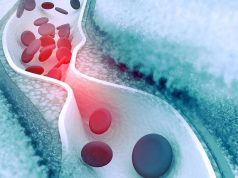Adjusted mean total cholesterol level decreased from 1999-2000 to 2015-2016 in youth aged 6 to 19 years
TUESDAY, May 21, 2019 (HealthDay News) — Between 1999 and 2016, there were favorable trends in lipid and apolipoprotein B levels in U.S. youth, according to a study published in the May 21 issue of the Journal of the American Medical Association.
Amanda M. Perak, M.D., from the Northwestern University Feinberg School of Medicine in Chicago, and colleagues analyzed trends in levels of lipids and apolipoprotein B in 26,047 U.S. youth aged 6 to 19 years for 1999 through 2016.
The researchers found that from 1999-2000 to 2015-2016, the adjusted mean total cholesterol level decreased from 164 to 155 mg/dL among all youth. From 2007-2008 to 2015-2016, the adjusted mean high-density lipoprotein (HDL) cholesterol level increased from 52.5 to 55.0 mg/dL; the mean non-HDL cholesterol level decreased from 108 to 100 mg/dL. Geometric mean levels of triglycerides decreased from 78 mg/dL in 1999-2000 to 63 mg/dL in 2013-2014 among fasting adolescents; during the same years, the mean levels of low-density lipoprotein cholesterol decreased from 92 to 86 mg/dL. From 2005-2006 to 2013-2014, the mean levels of apolipoprotein B declined from 70 to 67 mg/dL. Regarding the prevalence of ideal and adverse levels, favorable trends were generally observed.
“It will be important to understand the reasons for the favorable lipid trends observed in this study to both acknowledge public health successes and plan future efforts,” the authors write.
One author disclosed financial ties to NGM Biopharmaceuticals.
Copyright © 2019 HealthDay. All rights reserved.








